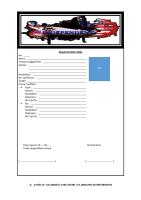Root is a morpheme which is the basic part of a word and which may, in many languages, occur on its own (e.g. man, hold, cold, rhythm). A root is a form which is not further analysable, either in terms of derivational or iflectional affix.
Roots may be joined to other roots (e.g. house + hold → household) and/or take affixes (e.g. manly, coldness).
Stem is the part of a word to which an inflectional affix is or can be added. A stem is of concern only with inflectional affixes. For example, in English the inflectional affix -s can be added to the stem work to form the plural works in the works of Shakespeare. The stem of a word may be:
- a simple stem consisting of only one morpheme (root), e.g. work
- a root plus a derivational affix, e.g. work +-er = worker
- two or more roots, e.g. work + shop = workshop.
Thus we can have work + -s = works, (work + -er) = workers, or (work + shop) + -s = workshops.
Base is any form to which affixes of any kind can be added. This means that any root or any stem can be termed as a base.
Transparent
Transparent means a lexeme that is clearly analysable into its constituent morphs and a knowledge of the morphs involved is sufficient to allow the speaker-listener to interpret the lexeme when it is encountered in context.
e.g.: postage, coverage, pilotage, etc.
Opaque
Opaque means a lexeme that is not clearly analysable into its constituent morphs and a knowledge of the morphs involved is unsufficient to allow the speaker-listener to interpret the lexeme when it is encountered in context.
e.g.: carriage is not clearly analysable into carry + age
hospital is not clearly analysable into hospit + al
Monday, August 18, 2014
Subscribe to:
Post Comments (Atom)







0 comments:
Post a Comment